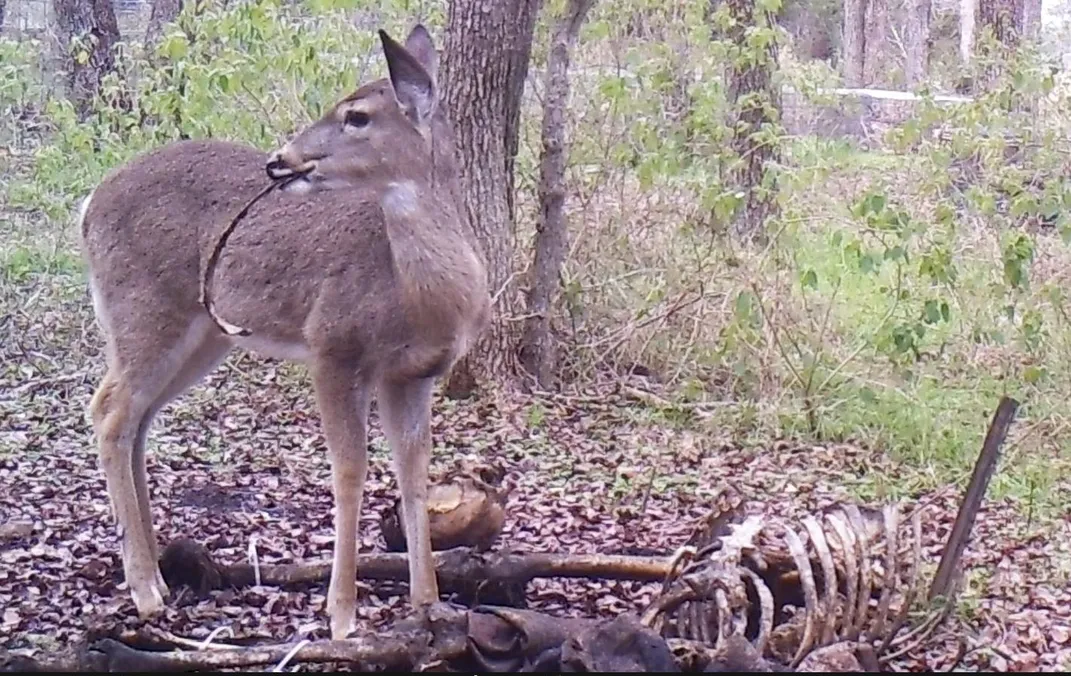Deer Caught Gnawing on Human Bones
For the first time, researchers spotted a white-tailed deer chewing on a rib bone at a body farm
:focal(793x780:794x781)/https://tf-cmsv2-smithsonianmag-media.s3.amazonaws.com/filer/ba/1b/ba1b720b-8d37-4c1f-9e74-462992bfe933/deerstare113151.jpg)
In what may be the most disturbing study published so far this year, researchers photographed the first-known instance of a white-tailed deer gnawing on human bones. As George Dvorsky reports for Gizmodo, in 2015, a camera trap captured images of a deer with a human rib sticking out of its mouth, likely gnawing on the bone to release minerals.
The bone-chewing deer was detected during a study of animal scavengers at the 26-acre Forensic Anthropology Research Facility in San Marcos, Texas, a “body farm” where researchers from Texas State University study the decomposition of human bodies. Researchers usually place a cage over the bodies to prevent large animals from scavenging the corpses. But, according to the case report published in The Journal of Forensic Sciences, researchers were hoping to record how scavengers impact decomposition. So they placed the body in a wooded area in July 2014 without a cage and used cameras to record the animals that stopped by to snack.
It wasn’t until 182 days after death—when much of the body had decomposed and the dry rib cage was exposed—that the deer appeared. On January 5, 2015, the camera trap photographed a white-tailed deer with a rib bone hanging out of its mouth that has previously been described as holding the bone "like a cigar," the researchers write in the paper. Eight days later, the camera caught another image of a deer gnawing on the bones, but it's unclear whether it was the same animal.

While knowing that deer may munch on human bones may seem like a macabre bit of trivia, documenting the damage deer do to bone can help forensic investigators in the future. According to the study, ungulates often chew on bones to get minerals like phosphorus, calcium and sodium into their diet. Deer have been known to chew on the bones of other animals, and prefer dry bones with a rectangular cross section. But this latest study documents the first instance of a deer chewing on a human bone.
The team also recovered the gnawed bones to examine the marks left by the deer. As Sarah Fecht at Popular Science explains, the zigzagging motion of the deer’s jaw leaves a distinctive forked pattern on the bone. Carnivores, by contrast, tend to gnaw on bones with their sharp teeth when they still have meat on them, leaving punctures and pits in bone.
This is far from the first surprising find about white-tailed deer. In 2015, after researchers in North Dakota set up nest cams to monitor songbirds, they discovered that deer would simply slurp baby birds out of their nests like candy, Dvorsky reports. Deer actually hit more nests than weasels and foxes.
Though deer may be cute and fuzzy, this latest study is another example reminding us that it's a rough and tumble world out there.